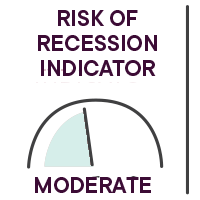The invasion of Ukraine by Russia and the impact of this war on commodity prices, as well as the surge in inflation and the rate hikes announced by central banks, remain the key focus of the markets.
What moved the markets in March
Listed companies will begin reporting their quarterly results in April. During the conference calls, their comments will allow us to understand the impact of inflation and the war in Ukraine on sales and earnings forecasts for the rest of the year.

|
OVERVIEW OF GLOBAL EQUITY MARKETSS |
||||
|
Country |
Index |
Return |
Change |
Year-to-date return |
|
Canada |
S&P/TSX |
+3.96% |
|
+3.82% |
|
United States |
S&P 500 |
+2.13% |
|
-5.66% |
|
|
Nasdaq |
+1.91% |
|
-9.96% |
|
International stock markets |
EAFE |
-0.89% |
|
-6.96% |
|
Emerging markets |
|
-3,75% |
|
-8.01% |
|
China |
MSCI China |
-9.40% |
|
-15.15% |
* All percentages are in Canadian dollars. Source: Morningstar Direct.
Key events

Repercussions of the war
The invasion of Ukraine by Russia led to a sharp increase in the price of both oil and food. Ukraine and Russia, as well as Belarus, which is currently subject to sanctions for supporting the invasion, are major grain and fertilizer producers. The effects on grain prices are already being felt in countries like Egypt and Peru.
Longer-term impact
Considering the repercussions of the Ukrainian conflict and the sanctions in force, many countries, particularly in Europe, will seek to be less dependent on Russian energy. The United States and Canada could increase their oil and gas production, as could countries in Europe that have the capacity. Because of the situation, energy security should take precedence over other environmental issues. Spending on renewable energy is likely to accelerate.
Military budgets will also increase, with Canada expected to announce a boost in military spending in its April budget.
Policy rate hikes
Central banks have indicated to the markets that they will raise rates this year and probably faster than expected in recent months.
- On March 2, the Bank of Canada raised its policy rate by 0.25%.
- The Fed raised its benchmark rate by 0.25% on March 16.
Comments from various Fed members over the past month suggest that the rate hikes will be bigger, as high as 0.50% at some meetings, and faster. The Fed’s balance sheet reduction will also begin sooner than expected, which means that the proceeds of some maturing bonds, as well as the coupon payments on bonds held by the central bank, will no longer be reinvested. This measure should have the same effect as an increase in interest rates. The objective expressed by both the Bank of Canada and the Fed is to reduce inflation as quickly as possible.
We believe that inflation will decrease over the next few months, but the situation in Ukraine and its effects on energy and food costs could cause it to persist. Of course, inflation measures that exclude the energy and food components should yield very different results.
Central banks likely won’t be able to raise rates as quickly as expected if they wish to maintain economic growth without creating a recession, rather than just an economic slowdown. The risk of stagflation is still present, if economic growth slows sharply without a concomitant fall in inflation.
In this context, central banks must protect economic growth as much as possible, while limiting inflation.
Employment situation
In the United States, job creation was slightly weaker than expected, but the numbers for the previous month were revised upwards. Once again, the labour force participation rate increased, which is positive, with more people now entering the workforce. The unemployment fell to 3.6% from 3.8% in February.
In Canada, 73,000 jobs were created in March, a decrease from the initially anticipated creation of 79,900 jobs. The unemployment rate fell to 5.3%, below the previous record low of 5.5% set in 1976. These new data should have no effect on the actions taken by the Bank of Canada, with the recovery of the job market having been achieved and with the BoC’s efforts targeting inflation.
Results – Canadian bonds
The FTSE Canada Universe Bond Index posted a negative return of 3.14% in March. (Source: Morningstar Direct)
Performance of our funds
View the returns

Our strategic monitoring
Main risks
- The possibility of an episode of stagflation, i.e. anemic economic growth and high inflation, persists. This situation is negative for the stock markets.
- An overly restrictive monetary policy could cause a major economic slowdown or even a recession.
- A major recession could occur in Europe if Germany decides to cut off all Russian gas imports.
Fundamental indicators
Some economic indicators that we continued to follow in March.
Benchmark rates in Canada, Europe and the United States ![]()
Bigger and faster rate increases than expected just a few months ago are negative for the value of financial assets. The Bank of Canada began its rate hike cycle, as did the Fed.
Global Purchasing Managers’ Index ![]()
The index remains above 50, which indicates an economic expansion. China’s number is below 50 and thus in contraction territory.
Personal savings ![]()
Savings rates in Canada and the United States are still above historical averages. The level of household debt is stable in Canada and the U.S.
Inflation rate ![]()
The inflation rate far exceeds central banks’ targets, which is forcing them to raise their policy rates. The crisis in Ukraine is increasing the costs of both energy and food, two components on which rate hikes have a limited effect.
 |
 |
| François Landry, CFA Vice-President and Chief Investment Officer |
Yann Furic, B.B.A., M.Sc., CFA Senior Manager, Asset Allocation and Alternative Strategies |
Sources: Bloomberg
The opinions expressed here and on the next page do not necessarily represent the views of Professionals’ Financial. The information contained herein has been obtained from sources deemed reliable, but we do not guarantee the accuracy of this information, and it may be incomplete. The opinions expressed are based upon our analysis and interpretation of this information and are not to be construed as a recommendation. Please consult your Wealth Management Advisor.




















